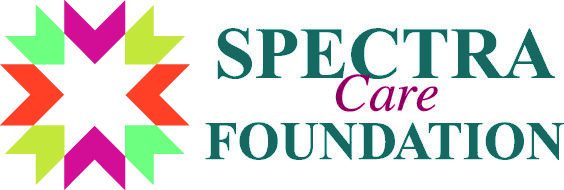You should seek the advice of a competent attorney or accountant licensed to practice in your jurisdiction for advice on your particular situation. If you’ve ever been surprised by a low bank balance and not understood why, reconciliation can help you see where your money is going. Digital payment solutions like Apple Pay or Google Pay are on the rise, and they https://agenceosee.com/EveryDoorDirectMail/every-door-direct-mailing need to be reconciled too. If they don’t align, you look for items like outstanding checks or deposits that haven’t cleared yet. Consistent account reviews help you see if your expenses are too high or if you need to cut back.
Application Management
Bank reconciliation is often performed monthly, ensuring compliance with standards like GAAP. Account reconciliation is a critical financial process that ensures the accuracy and consistency of an organization’s financial records. By comparing internal financial statements with external sources, such as bank statements, businesses can identify discrepancies, correct errors, and maintain financial integrity. Account reconciliation is like double-checking the financial books of a business.
Investigating Differences
Alternatively, they might reconcile accounts indirectly by examining the overall picture of these transactions in income statements and balance sheets. This can be carried out by an accountant, who compares your internal records to external sources such as bank statements or vendor invoices. Nearly a third of the businesses are gearing up to digitally transform their accounting operations using a slew of technologies, including cloud, AI, analytics, and RPA. But the digitization of the accounting processes, including account reconciliation and financial close, requires strong back-end data management policies and infrastructure.
Q10. What are some best practices to ensure account reconciliation accuracy?
It’s a great way to spot fraud, errors, or unrecorded purchases, such as a returned item that didn’t get logged. If you keep products in stock, it’s crucial to periodically cross-check the inventory recorded in your system with what’s physically in your warehouse. Instead of comparing records directly to an external document, you use estimates or historical data to see if your figures look reasonable. Any discrepancies, such as pending charges or interest fees, need to be fixed so both sets of records match. Regular reconciliation highlights errors made by your bank or other institutions, so you can correct them and keep a clear picture of your finances. Through diligent account reconciliation, you verify that all these entries contain the right information.
- This highlights the significance of accurate accounting reconciliation in detecting and preventing fraudulent activities within an organization.
- However, these systems also require safeguards against unauthorized access, adhering to standards like GDPR.
- Well-maintained records help organizations analyze trends and make informed forecasts.
- During reconciliation, you should compare the transactions recorded in an internal record-keeping account against an external monthly statement from sources such as banks and credit card companies.
- Reconciliation is vital for monitoring business spending, providing insight into financial cycles, and preventing surprises.
- This process is vital for maintaining accurate revenue records and timely collection of receivables.
Common Challenges in Account Reconciliations and How to Solve Them
Account reconciliation involves comparing two sets of financial records, such as your internal ledger and your bank statements, to make sure they match up. The accounting team in an organization is responsible for reconciling accounts at the end of each financial period to ensure that the GL balance is complete and accurate. In order to perform reconciliations accurately, accountants need to have all the relevant documents including bank statements and vendor information. Accountants typically perform an account reconciliation for all their asset, liability, and equity accounts. This process involves reconciling credit card transactions, accounts payable, accounts receivable, payroll, fixed assets, and subscriptions to ensure that all are properly accounted for and balanced. A common example of account reconciliation is comparing the https://agenceosee.com/DirectMail/tulsa-direct-mail general ledger to sub-ledgers, such as accounts payable or accounts receivable.
Two Ways to Reconcile an Account
This ensures that all transactions are recorded accurately and any discrepancies are identified and corrected. Performing account reconciliation is crucial for businesses to avoid errors in their financial records and to prevent potential issues during audits. Most companies prefer to reconcile their accounts monthly after closing their financial books. This blog delves into the essentials of account reconciliation, outlining the step-by-step process, exploring various types, and how to automate reconciliation processes.
- According to a survey conducted by the Association of Certified Fraud Examiners (ACFE), financial statement fraud constituted 9% of all reported fraud cases in 2022.
- Reconciliation enables us to identify such anomalies and ensure that these entries are adjusted prior to creating the financial statements.
- This process is known as bank reconciliation, a subtype of balance sheet reconciliation.
- Most companies prefer to reconcile their accounts monthly after closing their financial books.
- Setting realistic expectations for AI implementation is key to understanding your ROI on AI spending.
- If your records don’t match up, you’ll know to investigate potential errors or missing payments.
Accurate information reduces the risk of missing deposits or accidentally overdrawing accounts, allowing https://acumentia.net/author/acumentia/page/3/ for better budgeting.
It involves comparing the company’s official records, like the balance sheet, with supporting documents such as bank statements and transaction details. If the numbers at the end don’t match, accountants dig into the reasons for the differences. They then fix any mistakes or missing transactions by making the necessary adjustments in the records. This helps ensure that the company’s financial information is accurate and error-free. In accounting, reconciliation refers to the practice of comparing two sets of financial records to make sure they are accurate and free from errors. The process typically involves comparing accounts in the company’s general ledger and sub-ledgers with external financial documents like invoices, receipts, and bank statements.
